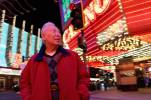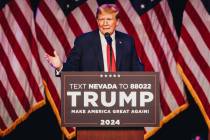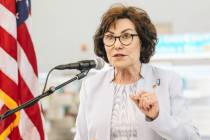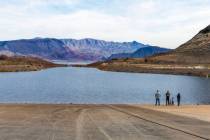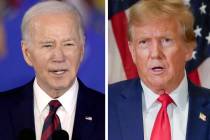Hispanic leaders dislike redistricting boundaries
CARSON CITY — Hispanic community leaders expressed dissatisfaction Thursday with Republican plans to redraw the boundaries of state Senate and Assembly districts, saying the proposals would limit the number of Hispanic candidates who can be elected.
“Democrats listened to the input of the Hispanic community, but the Republicans packed Hispanic communities into one district,” said Artie Blanco, a leader of Mi Familia Vota.
Fernando Romero, a leader of Hispanics in Politics, said he did not like the Republican-drawn districts for the Assembly, Senate and Congress because they dilute Hispanic communities of interest in northeast and eastern Las Vegas.
He defined the heart of the Las Vegas Hispanic community as the area bordered by Interstate 15, Cheyenne Road, Nellis Boulevard and Desert Inn Road.
Blanco and Romero spoke during an hourlong hearing on redistricting by the Senate Legislative Operations and Elections and Assembly Legislative Operations and Elections committees. It was the first meeting in which legislators and witnesses could examine all Republican and Democratic redistricting maps.
Another meeting will be held today as legislators try to reach agreement on one plan that can withstand a possible governor’s veto and legal challenges.
Each party is drawing up a bill for its maps. Because Democrats control the Assembly 26-16 and the Senate 11-10, their maps could be approved on a party-line vote.
Gov. Brian Sandoval could veto a bill if it does not have sufficient Republican support. But legislators of both parties were polite Thursday in a meeting largely held to acquaint themselves with the maps and to let people speak.
During the hearing, Tibi Ellis of Las Vegas said legislators need to draw congressional district maps so that a Hispanic person has a good chance to win one of Nevada’s four congressional seats.
“Please consider that one of every four Nevadans is Latino,” said Ellis, a Republican who lost a primary race for the Assembly last year.
Under the Democrats’ plan, the congressional district represented by Rep. Shelley Berkley, a Democrat, would have a 33.6 percent Hispanic population. The other three House districts would be 20.5 percent to 29.2 percent Hispanic. Berkley’s district is now 28 percent Hispanic.
On the other hand, the Republican plan for new 4th Congressional District shows a 50.7 percent Hispanic population, while the three others are 14.4 percent to 20.6 percent. District 4 largely would be in North Las Vegas and Las Vegas.
Nevada never has elected a Hispanic to the U.S. House, and only in the 2010 election did a significant number of Hispanics win seats in the Legislature.
Two Hispanics, Mo Denis and Ruben Kihuen, are in the Senate, while eight Hispanics are Assembly members. But that is 16 percent of the 63 legislators, compared with the state’s overall 26.5 percent Hispanic population.
All Hispanic legislators are Democrats, but Sandoval is a Republican and the first Hispanic governor in state history.
Assembly Minority Leader Pete Goicoechea, R-Eureka, said he did not know why the Hispanic leaders complained about the Republican maps. Under the GOP proposal, eight Assembly districts would have populations of more than 50 percent Hispanic, compared with three in the Democrats’ proposal. The Democratic plan, however, would have 12 Assembly districts with at least a 30 percent Hispanic population.
Contact Capital Bureau Chief Ed Vogel at evogel@reviewjournal.com or 775-687-3901.
ON THE INTERNET: Maps and the population breakdowns of all the proposed districts can be found on the Legislature’s website: http://leg.state.nv.us




